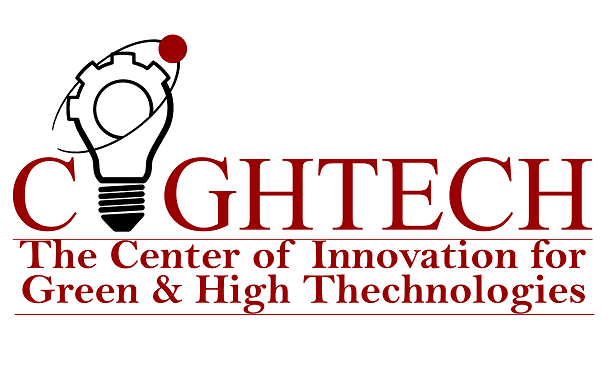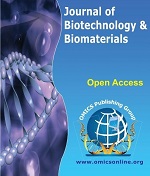Theme: Theme: Latest Innovations in Nanotechnology for the Next Generation
Nano Summit 2021
Nanotechnology Conferences Committee welcomes all the participants from all over the world to attend "38th Global Summit on Nanoscience and Technology" this auspicious event is hosted during June 21-22, 2021. We warmly welcome all the international participants, prominent researchers, students, business entrepreneurs and delegates. This Summit includes prompt keynote presentations, Oral talks, Poster presentations from the Young Researchers Symposia, B2B meetings with world-renowned speakers from the stream of Nano Technology.
Nano Summit 2021 provides you with a distinctive chance to gather with peers through online from both academic circle and industries level belonging to Recent Advances in Nanotechnology and have been deliberate in an interdisciplinary manner with a huge number of tracks to select from every section and It discover inspired technologies regarding Nano materials and Nano Technology at the universal scale and aims to complete the targeted scientific sessions and recent advancements in the field of Nanoscience and Technology. The aim of this webinar is to gather all experts to exchange ideas through online and authoritative views by leading professionals which covers the entire research related to Nanotechnology, Nano medicine, Nano electronics.
Nano Summit 2021 is the platform where you can variance experts, authorities from around the world. It’s your time to grab the chance to join Nano Summit 2021 in a group of Speakers, Delegate, Poster, video proposal, Networking and extra benefits for our Event Sponsor. With members from around the world focused on knowledge about Nano materials & this is your single best opportunity to reach the largest assemblage of participants from all over the world.
- B2B meetings with experienced Industrial experts in Nanotechnology
- Interact with eminent international speakers
- Access new and profound research ideas
- Avail opportunities to network and exchange ideas
- Get inspired towards undertaking professional studies
- Gain recognition & earn a reputation
- Connect with industry experts
- Networking: Explore collaborations with domestic/foreign partners
Target Audience
- Nanotechnology Professionals
- Leading scientists
- Biomedical Engineering
- Professors
- Fellows or postdoctoral students
- Researchers, CEOs
- Business Delegates
- Doctors
- Young research scientists
- Nanotechnology Associations and Societies
- Manufacturing Medical Devices Companies
- Healthcare professionals
- Founders and Employees of the related companies
- Clinical investigators
Track 1: Nanoscience and Technology
Nanoscience is the study of structures and materials on an ultra-small scale, and the distinctive and attractive properties these materials demonstrate. It is the application and study associated with little things that can be used around the diverse fields of science, development, material science. These particles have capability to manage single atoms. Nanotechnology has a huge possible to give innovative clarifications for different issues in science, essentialness, material science, contingent and therapeutic fields.
- Nanometer scale
- Polymeric micelles
- Nano sensors
- Nano Lithography
- Nano fluidics
Track 2: Nanotechnology & Advanced Materials
Nanotechnology is a new branch of science which includes management of properties of matter at nano scale. The basis of nanotechnology lies in the verification that the properties of a component can be manipulated easily when it exists in its nano form (diameter of 1-100nm). The extensive clarification of nanotechnology indicates to the particular technological objective of specifically manipulating molecules for manufacture and atoms of macro scale products, also now introduced as molecular nanotechnology.
The study of advanced materials mainly centers about activities to plan materials at a sub-atomic level to achieve alluring applications and properties and at a naturally visible level. Nano materials are extremely important these days in the huge majority of the fields, for Medicine, Chemotherapy, Drug conveyance, developed forms and Paints. It has huge physically and naturally various and ultra-fine particles. Specific properties are associated with shape, measure, surface properties and science.
- Polymer-based nanomaterials
- Nanoceramics for medical applications
- Nanostructured Coatings, Surfaces and Membranes
- Nanoparticles Synthesis and Applications
- Nanocomposites & Bionanocomposites Materials
Track 3: Nano electronics
Nano electronics is refers to the utilization of Nanotechnology in electronic components. These components are often only a couple of Nano meter in size. However, the tiny electronic components become the harder they're to manufacture. Quantum effects such as tunnelling and atomistic disorder dominate the individuality of these Nano scale devices.
Nano electronics is discrete as nanotechnology which agrees the combination of electronic devices, electronic chips and circuits. This kind of technology combination can be described as the ‘More than Moore’ field of expansion. The researchers are exploring different methods for designing and producing logic circuits by incorporating photosensitive organic particles into tiny molecules of semiconductor material called quantum dots. These improvements of nano electronic components are called as ‘Beyond CMOS’ domain of development. The digital system Integrated with Radio-Frequency (RF)/analog circuits.
- Energy Harvesting
- Thin Films and Nanotechnology
- Semiconductor
- Microelectronics
- Semiconductor Devices
- Spintronics
Track 4: Nano particle
Nano particles are significant in various engineering and industrial fields comprising engineering catalysts, electronics, new batteries, biotechnology, drug delivery system, etc., and makes utilize of the unique properties of nano particles, which are totally different from those of the bulk materials. The surface layer is an important part of Nano scale matter, fundamentally affecting all of its properties. The surface layer usually consists of ions, inorganic and organic molecules. In nanotechnology, an element is defined as a small object that behaves as an entire element with reference to its transport and properties. Particles are further classified according to diameter.
- Nano particle heterogeneity and interaction
- Nanometers
- Recent trends in nanotechnology
- Nano particle characterization and application
- Gold nano particles and biosensors
Track 5: Nanofabrication
Nanofabrication refers to the design procedure of nanomaterial and devices that are measured in nano meters. It is a cheap method where by large scale economy is manufactured using the same machinery and elegance and tiny amount of fabric. Component sizes that were in tens of micro meters became single digit micro meters, then many nano meters, then went right down to a couple of tens of nano meters where they stand today. Nanofabrication is often divided into three major areas: thin films, lithography, and etching. Each of those is vast subject areas in and of themselves.
- Micro/Nano fabrication
- Laser surface micro-texturing
- Conditions for nanofabrication
- Position and control strategy
- E-beam Nanofabrication
- Environment
Track 6: Smart material/Nano Materials
An Engineer can modify the properties of materials during a skilful method under the impact of external stimuli. These exterior impacts contain temperature, force, moisture, charge, magnetic flux and ph. piezoelectric materials either yield voltage when stressed or change its shape under the impact of an electrical charge. Thermo responsive materials also are referred to as shape memory alloys or shape memory polymers (an alloy which will be deformed when cold but returns to its pre-deformed shape when heated). In medical field the utilization of smart materials that answer injuries by delivering drugs and antibiotics or by hardening to supply sew a broken limb.
- Piezoelectric materials
- Thermo responsive materials
- Polychromic, Chromogenic or Halo chromic Materials
- Applications of smart Nano materials
Track 7: Application of Nanotechnology
Applications of nanotechnology are limited to the majority use of passive nano-materials which include titanium oxide and in sunscreen, cosmetics and also food products like silver nano-particles in food packaging, clothing, disinfectants and household appliances. Nanotechnology is developed for variety applications one among industrial purification and environmental cleanup applications that are the desalination of water, wastewater treatment, groundwater treatment, water filtration and other nano-remediation.
- Green nanotechnology
- Potential applications of carbon nanotubes
- Nanotechnology in warfare
- Industrial applications of nanotechnology
- Fabrication of nanoelectronic devices
Track 8: Nano Biotechnology
Nanobiotechnology is that the interface of Nanotechnology and biotechnology and it includes the appliance of nanotechnology within the bioscience. The use of the important properties of nucleic acids like DNA to make useful materials may be a successful modern research. Bio nanotechnology is that the term that refers to the crossroads of nanotechnology and biology. These ideas which improved through Nanobiology are includes with materials like Nano scale, Nano devices, and nanoparticles phenomena that happens within the discipline of nanotechnology.
- Nanoscience in agriculture
- Nanoscience in food industry
- Surface modified polystyrene nanoparticles
- Nano systems
- Nano ink
Track 9: Nano Robotics
Nano Robotics is that the innovation of creating machines or robots at or on the sting to the dimensions of a nanometre. The word Nano advanced mechanics alludes to the part of nanotechnology that has designing, planning, and dealing of Nano robots. These gadgets are regularly infused into the patient to perform analysis on a cell level. The sum of uses for Nano robots in drugs incorporate brisk examination or therapy and focused on drug conveyance for malignancy therapeutics, Nano measured biomedical instrument for medical procedure, pharmacokinetics, illness checking and for different purposes.
- Swarm Robotics
- Nano robotics Design and Control
- Human-Robot Interaction
- Industrial Robot Automation
- Medical Robotics
Track 10: Nano Tubes and Nano Wires
A nanotube is nano meter-scale tube-like structures, which are also referred to as nanowires, in terms of feature ratio. Nano tubes can be single-walled or multi-walled. Nano wires are in 1D nanostructure which generally has diameters of the tens in order of nanometres. The length to diameter ratio can also be the maximum amount as 1000. Nanowires and nanotubes are at the forefront of materials science at the Nano scale. Carbon nanotubes are considered as prototype examples of nanowires and nanotubes. Both Nano-materials are important for practical applications, and provide a system that simple enough in order that detailed calculations of their properties are often administered, and predictions about their physical behaviour are often made. The occurrence and control of bizarre and unique properties of specific nanostructures are the drivers for the exploitation of Nano science in nanotechnology applications.
- Nano rods
- Inorganic Nanowires
- Inorganic Nanotubes
- Carbon Nanotubes
Track 11: Nanolithography
The term nanolithography originate from the Greek words “nanos”, meaning Dwarf; “lithos”, meaning rock; and “grapho” meaning to write. Therefore, the literal meaning is tiny writing on rocks. Nanolithography is that the science of etching, writing or printing to modify a material surface with structures under 100nm. The purpose of nanolithography is that the shrinking of electronic devices, which allows for more electronics parts to be, crammed into smaller spaces, i.e., smaller integrated circuits that result in smaller devices, which are faster and cheaper to manufacture since less materials are required. This also increases performance and response times because the electrons only got to travel very short distances.
- Electron-Beam Direct Write (EBDW) lithography
- Extreme ultraviolet (EUV) lithography
- Light Coupling Nanolithography (LCM)
- Scanning probe microscope lithography (SPM)
- Nano imprint lithography
Track 12: Nano Engineering
Nano engineering is a practice of engineering that deals with all aspects of the design, use of engines and structures on the nanoscale. At its core, Nano engineering deals with nanomaterials and how they interact to make useful materials, structure, devices and systems. Nano engineering is not exactly a new science, but it enabling technology with application in industries from electronics, medicine, and biotechnology. While the term Nano engineering is largely used synonym for nanotechnology, the former technically focuses on the engineering aspects of the field. Other closely related terms used in this context are Nano manufacturing and nanofabrication. One possible approach to differentiate between the terms is by using the criterion of economic viability.
- Micro/Nano fluidic systems
- Si based and Non-Si MEMS/NEMS
- MEMS/NEMS measurement techniques, wafer level testing
- Lab on chip device
- Organic and molecular electronics and nano-thermoelectric
- Spin electronics
- Spintronics Nanoengineering
Track 13: Nano Chemistry
Nano chemistry is an amalgamation of Nano science and chemistry. Generally, uses many methods to formulate and collect small pieces of matter which indicate unique magnetic, optical, electronic, chemical and mechanical actions attributable only to their nano meter size. Nano chemistry use approach from the synthetic chemistry and therefore the materials chemistry to acquire Nano material’s with particular sizes, shapes, surface properties, deformities, self-gathering properties, intended to satisfy particular capacities and uses. Nano materials can be made from for all purposes any material, for example, metals, semiconductors and polymers, both in their nebulous and crystalline structures. Its technique can be utilized to make carbon Nano materials, for example, carbon nanotubes, grapheme and fullerenes which have picked up consideration as of recently because of their mechanical and electrical properties.
- Nano materials synthesis
- Nanolithography
- Nano composites
- Nano particle synthesis
Track 14: Nano Devices and Nano Sensors
Nano devices, the quickest moving segment of the general market, the Nanotek research involves in Magnetic Nano devices, Smart sensors and Nano-biosensors, Optical biosensors, Smart delivery system, Nano switches, and biologically inspired gadgets are predicted to transport at an excellent 35% CAGR. Nano-biosensors for 75%, 8% the phase Nano switches and Optical biosensors are anticipated to develop to 52.9 billion via 2021 and register a healthy 20.8% CAGR. Nano sensors will better hit upon the onset of sicknesses along with cancer or coronary heart ailment, and Nano market expects the marketplace for biomedical Nano sensors to attain approximately $1886 million in 2021. Around 19 universities and 54 new research initiatives are exhibited in Nanotechnology convention.
- Biologically inspired devices
- Magnetic Nano device
- Nano switches
- Quantum dot sensors
- Nanowire based sensor
- Carbon nanotube based sensor
Track 15: Nano Technology in clinical and Translation Research
Nanotechnology offers some exciting potentials in medical science. Nano medicine involves two main techniques i.e. Diagnostic technique and Therapeutic technique. Nano flares are designed bind to genetic targets in cancer cells and generate light when that specific genetic target is found. Nanotechnology provides methods to inactivate genes in cells without genetic changes, to isolate their function. It is a mixture of therapeutic and imaging material supported the utilization of nanoparticles for drug delivery. Both approaches give an insight into the potential breakthroughs clinical research in which can be accomplished with nanotechnology. Furthermore, the nanotechnology-based methods are emerging as a big breakthrough for the straight forward and rapid analysis of the genetic basis and treatment of diseases.
- Nano Medicine
- Nano Drug delivery system
- Nanotechnology and Nano biomaterials in Dentistry
- Regenerative Engineering and Translational Medicine
Track 16: Nano Photonics
Nano photonics studies the behaviour of light on nano meter scales as well as interactions of nano meter sized objects with lights. Nano photonics is considered a branch of electrical engineering, optics, and optical engineering as well as being a branch of nanotechnology. Nano photonics includes metallic components that can transport and focus light through surface plasmon polaritons. One of the great promises of Nano photonics the possibility that light is trapped in optical cavities inside three-dimensional photonic band gap crystals. An optical cavity in a photonic crystal is manufactured by either adding or removing high index of refraction material, which yields a donor or an acceptor, respectively. The mirrors of the optical cavities are formed by the surrounding photonic crystal with a band gap. It has been predicted that light is trapped in such a photonic crystal cavity in a small volume as small as 1/100th of a wavelength cubed. It is a challenge to embed such controlled point defects inside three-dimensional photonic band gap crystals to attain functional systems.
- Review of Fundamentals of Lasers
- Plasmonic and Meta-materials
- Optical Cavities in a Three-Dimensional Photonic Crystal
- Nano corals slit diffractor in Nano photonic
- Nanotechnology in physics
- Nano scanning probe and microscopy
- Electron laser Nanoparticles in Nano photonic
- Nano magnetism and opt mechanics
- Amplifiers and Isolator
- Electro-optic Modulators
- Solar cells
- Nanodots
Track 17: Nano Geo-Science
The learning of Nano scale insights accompanied with geological system is Nano geo-science. Predominantly, this is interviewed by considering environmental nanoparticles size from 1 to 100nanometers. The Nano Geo-Sciences research team works closely with X-ray physical science in the Nano-Science Centre. Nano geoscience encompasses the incorporation of microscopy, spectroscopy, and theoretical modelling comprised with experimental and fieldwork learning on the bulk manner connected with Nano scale mechanisms. Electron microscopy and allied spectroscopy approaches have been key techniques in this field for decades.
- Nano geo-science transport phenomenon at Nano scale
- Characterization and development of Nano scale particle
- Nano bioorganic chemistry
- Bio-mineralization
- Methods for immobilizing Nano toxic compounds
Track 18: Future prospects of Nanotechnologies and commercial viability
Nanotechnology covers many areas of science, research and technology, The future of nanotechnology has been a subject of scientific and non-scientific imagination. Nanotechnology is an advance science which is estimated to have quick and strong future developments. According to scientists, nanotechnology is forecast to have four generations of advancement. We are currently be subjected to the first or second generation of nanomaterials.
- Nano medicine for improved HIV drug therapies
- Thermoelectric Screen printing
- Liquid-Repellent materials
- Light-Seeking Synthetic Nano robot
- Super –powered bionic plants
Nanoscience is the medical application of nanotechnology. Nanomedicine varies from medical applications of nanomaterials & biological devices through nano electronic biosensors and even possible future applications of molecular nanotechnology such as biological machines. As per the WHO factsheet, cancer is found to be one of the major causes of mortality and morbidity worldwide, with approximately 14 million new cases in 2012 and 8.2 million cancer-related deaths. Thus, the demand for nanomedicine in order to curb such high incidence rate is expected to boost market progress during the forecast period.
Nanotechnology Market 2019-2025:
Potential pipeline of products based on the nano molecules and associated technologies are anticipated to drive market with potential avenues of growth, presence around 40% of products in phase II of clinical development is anticipated to result as a number of key commercialization over the coming decade influencing revenue generation over the forecast period. The customized treatment option available for eradication of genetic abnormalities also makes this technology a substantial option for precision medicine. The global nanomedicine market size was estimated at USD 138.8 billion in 2019. Technological advancements coupled with relevant applications in early disease diagnosis, preventive intervention and prophylaxis of chronic as well as acute disorders is expected to bolster growth in this market. Nanotechnology involves the miniaturization of larger structures and chemicals at nanometric scale which has significantly revolutionized drug administration, thus influencing adoption of the technology through to 2025.
Global Market Nanotechnology Overview 2019-2024:
- Nanotechnology is a rapidly growing technology with potential applications in many sectors of global economy, namely healthcare, cosmetics, energy, and agriculture among others. The technology is revolutionizing every industry, while tremendously attracting worldwide attention.
- Owing to its wide range of uses, the global nanotechnology market is expected to grow at a CAGR of around 17% during the forecasted period of 2018-2024. Thus, there lies a great opportunity for industry participants to tap the fast-growing market, which would garner huge revenue on the back of commercialization of the technology.
- In the latest research study, Global Nanotechnology Market Outlook 2024, analysts have conducted a segmented research on the nanotechnology industry, and have interpreted the key market trends & developments that clearly highlight the areas offering promising possibilities for industries to boost their growth.
- In 2017, the global nanotechnology market has shown impressive growth owing to factors, like increase in government and private sector funding for R&D, partnerships & strategic alliances between countries, and increased in demand for smaller and more powerful devices at affordable prices.
- At present, the healthcare industry is one of the largest sectors where nanotechnology has made major breakthrough with its application for the diagnosis and treatment of chronic diseases like cancer, heart ailments, etc. Further, significant developments are also being done in other sectors like electronics, agriculture, and energy.
- In this report, the analysts have studied the current nanotechnology market on segment basis (by application, by component and by region), so as to provide an insight on the current market scenario as well as forecasts of the aforementioned segments till 2024. The report provides an in-depth analysis of all the major segments, taking into account the major developments taking place at global level in the respective segments that will further boost the growth of nanotechnology market.
- Further, the application section covers the use of nanotechnology in electronics, energy, cosmetics, medical, defense, and food & agriculture sectors; while the component section covers the segregation of nanotechnology market into nanomaterials, nanotools, and nanodevices.
- Additionally, the report covers the country-level analysis of 13 major countries like the US, France, UK, Germany, and Russia among others in terms of R&D, nanotechnology patent analysis, funding & regulations, to provide an in-depth understanding about the investments and recent research & developments done in the field of Nanotechnology.
- Besides, the report covers the profiles of key players like Altair, Nanophase Tech, Nanosys, etc. with the key financials, strength & weakness analyses, and recent activities, providing a comprehensive outlook of global nanotechnology industry. Overall, the report provides all the pre-requisite information for clients looking to venture in this industry, and facilitate them to formulate schemes while going for an investment/partnership in the industry.
Conference Highlights
- Nanoscience and Technology
- Nanotechnology & Advanced Materials
- Nano electronics
- Nano particle
- Nanofabrication
- Smart material/Nano Materials
- Application of Nanotechnology
- Nano Biotechnology
- Nano Robotics
- Nano Tubes and Nano Wires
- Nanolithography
- Nano Engineering
- Nano Chemistry
- Nano Devices and Nano Sensors
- Nano Technology in clinical and Translation Research
- Nano Photonics
- Nano Geo-Science
- Future prospects of Nanotechnologies and commercial viability
To share your views and research, please click here to register for the Conference.
To Collaborate Scientific Professionals around the World
| Conference Date | June 21-22, 2021 | ||
| Sponsors & Exhibitors |
|
||
| Speaker Opportunity Closed | Day 1 | ||
| Poster Opportunity Closed | Click Here to View | ||
Useful Links
Special Issues
All accepted abstracts will be published in respective Our International Journals.
- Journal of Biotechnology & Biomaterials
- Research & Reviews: Journal of Pharmaceutics and Nanotechnology
Abstracts will be provided with Digital Object Identifier by





















